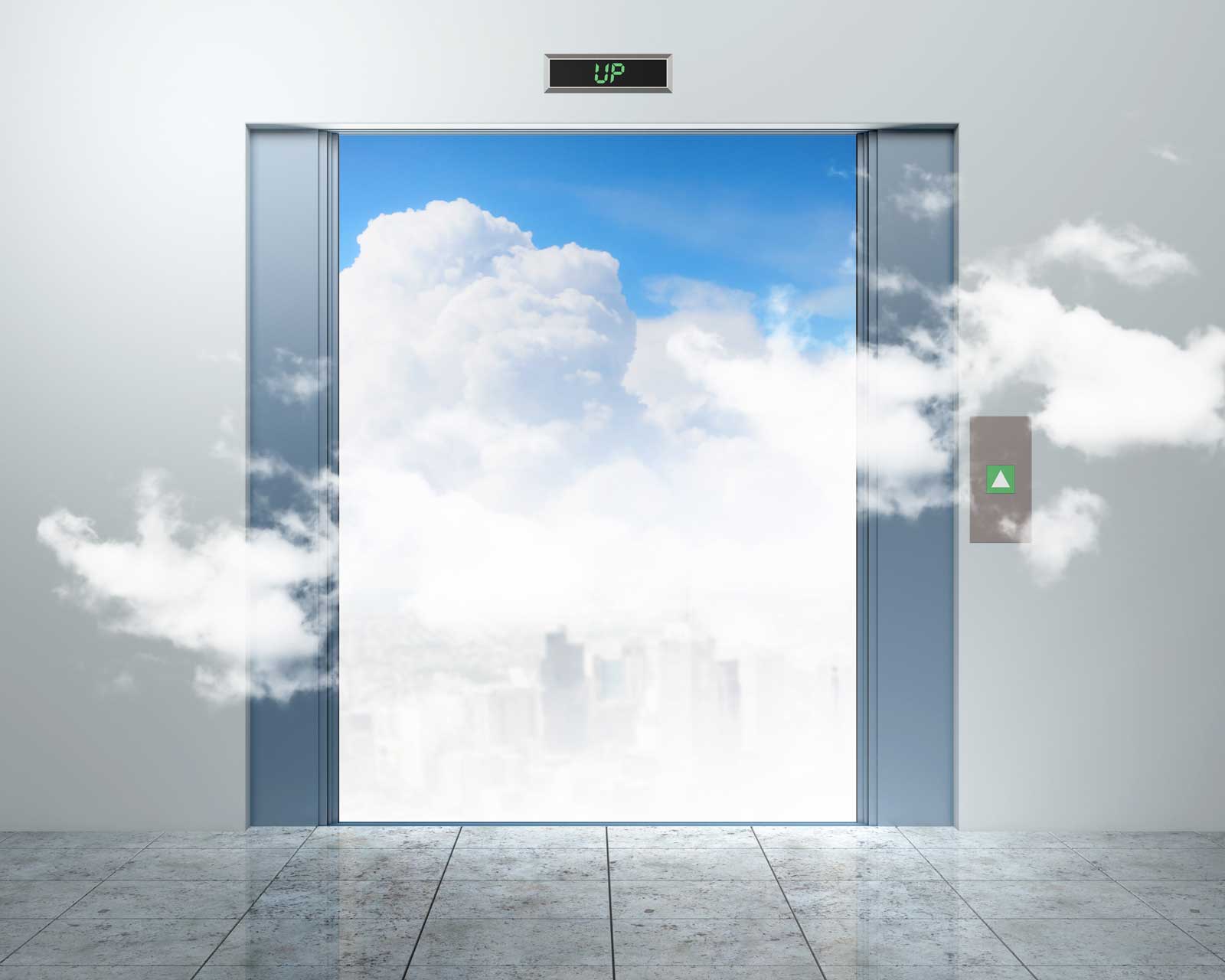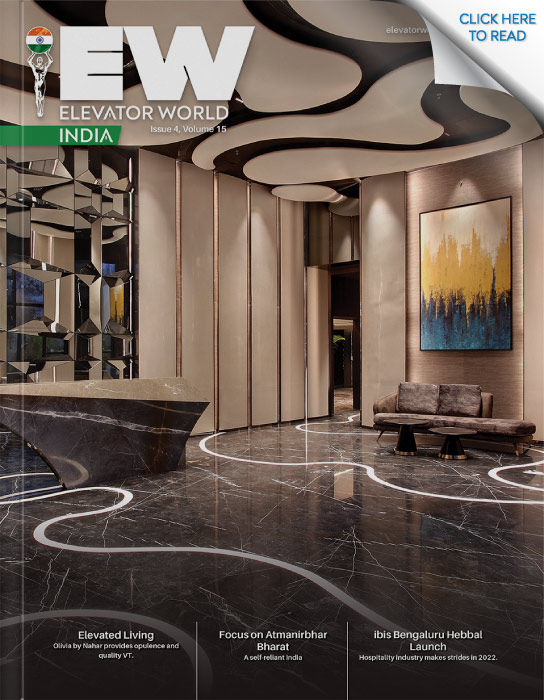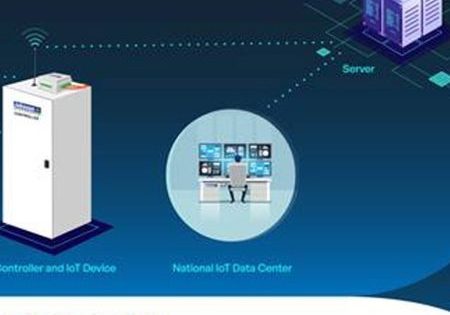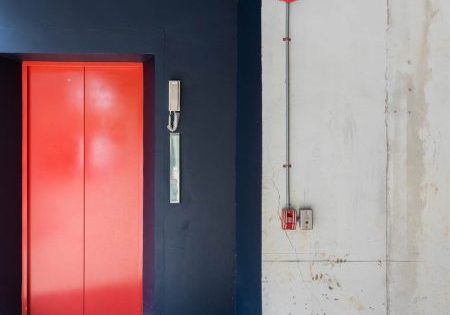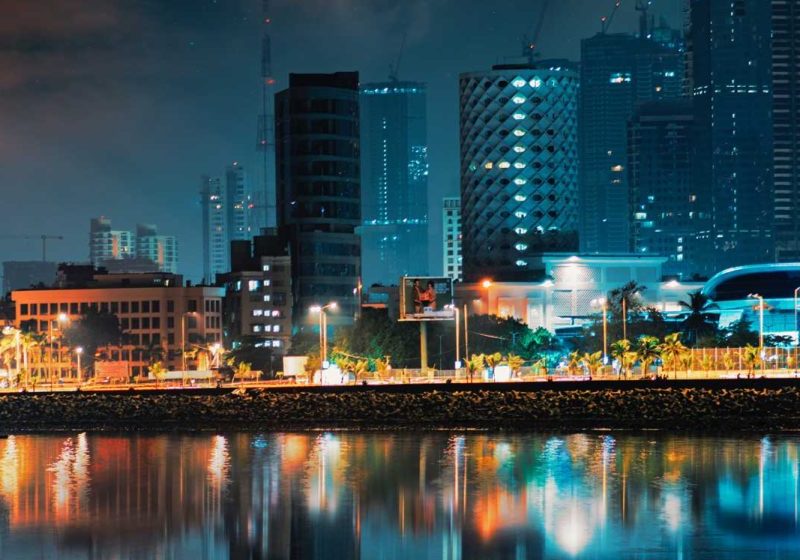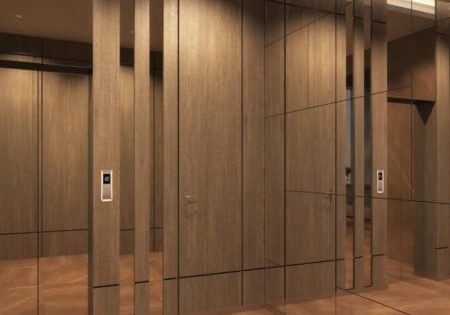Mitsubishi Elevator India innovates and embraces sustainable technologies in the VT segment.
Elevators move approximately 325 million passengers a day across the world. Advancement and taller infrastructure designs and buildings are conquering metropolitan cities. Today, almost half of the world’s population lives in cities, and by 2050, it is estimated that 68% of the world’s population will move to urban areas. This will lead to expansion and growth in urban areas to create ample living space for the rising population. High-rise buildings and advanced elevator designs will be the technologically advanced and sustainable vertical mobility solutions for the near future.
Developers will devise a way to build tall, energy-efficient and green buildings that consume less water and energy. While not much attention has been given to the contribution of elevators to sustainability, they are crucial in improving the sustainability quotient of a building. One of the reasons elevator systems have not been prioritized as part of sustainability initiatives is that, until recently, elevators had been excluded from LEED consideration, since they were deemed expensive. It was only recently that the US Green Building Council (USGBC) said that elevators, as a key building component, should be included, and this change is reflected in LEED v4 for better environmental and social impacts.
Elevators are now essential to any green building. To make buildings more environmentally sustainable, elevator manufacturers are improving their products with technologically advanced features that decrease energy consumption. Elevators weigh thousands of kilos, and moving them from the ground floor to the top consumes tons of energy. Typically, elevators account for 2-10% of a building’s energy use, and this could include control panels, lighting, ventilation systems and the mechanical technology used to operate the elevator system. Better elevator design can improve a building’s overall sustainability.
This could start with replacing an old elevator. Aging elevators have DC units, which are less energy-efficient than AC units. Lighting is another energy guzzler. LED-style lights consume less energy than incandescent lights, reducing energy costs.
Mitsubishi Elevator India offers features that make their devices energy efficient. These include:
- Elevators that reduce energy consumption and contribute to environmental sustainability. The company uses regenerative converters in its elevators, which is a device that transmits power generated by a traction machine via distribution transformer to the electrical network in the building so it can be reused by the building’s power supply for other electrical systems. This initiative helps in saving energy by almost 35%.
- Elevators are designed with an electricity recycling system, which stores electricity generated during regular elevator operations. The electricity stored in nickel-hydrogen rechargeable batteries can be used as an auxiliary power supply for running elevators, providing approximately 20% power savings.
- Variable traveling speed allows elevators to travel faster than their rated speed depending on the number of passengers in the car, thereby improving transport efficiency. This feature allows for traffic improvement without increasing power supply capacity and ultimately contributes to sustainability.
- Permanent magnet (PM) motor with stator in traction machines that allows coils to be wound around the core more densely, resulting in greater motor efficiency and compactness, thereby helping in saving energy by 20%. The direct-drive PM door motor and the variable-voltage, variable-frequency (VVVF) inverter realize efficient door opening and closing.
- A high-defined feature that allows automation of the car lighting and the ventilation fan and deactivates them when there are no calls for a longer duration.
- The ∑AI group control system, which allows for effective control of multiple elevators. Its energy-saving operation, smart-control technology has a system wherein, according to each car’s location and passenger load, the group control system assigns a call to the elevator that best balances operational efficiency. This saves energy consumption by 10%.
To realize a sustainable global environment, Mitsubishi Elevator India aims to de-carbonize society through innovation and integrated solutions. The company has set a target to decrease the amount of CO2 emitted when using elevators to 1% or less compared to previous models. In comparison to FY2017, the company hopes to reduce CO2 emissions by 9% or more by FY2024. It also aims to increase recycling of any plastics used by 10% or more by FY2024 and achieve a circular economy for India.
Green elevator technology is not just about the product. Companies such as Mitsubishi Elevator India have taken measures to reduce the environmental impact created during processing, manufacturing and throughout an elevator’s lifecycle. This lifecycle extends from developing eco-products to an eco-factory to environmentally-friendly installation and maintenance practices. To minimize the negative environmental impact of its business activities, the company employs environmentally responsible manufacturing technologies and production processes.
Mitsubishi Elevator factory headquarters, located in Japan, includes such measures as rooftop gardens in its factory buildings to shield them from heat and improve the efficiency of air-conditioning and ventilation tunnels on elevator test towers. The tunnels allow the tower to “breathe” fresh air through window louvers, thereby ventilating the tower and cooling off the indoor temperature.
Photocatalytic tiles are used on the outer walls of towers to resist and decompose dirt and even bacteria. Old lights have been replaced with high-frequency inverter lights, as the illuminance sensors help optimize the use of natural light and save 270,000 kWh of electricity per year. Mitsubishi Elevator India has implemented something similar in their Bengaluru factory, as well.
In terms of logistics, by reusing wood from crates, Mitsubishi Elevator has reduced wood consumption by 240 m3 per year on a global level. The packaging for small parts of escalator trusses changed from wooden crates to cardboard boxes, which reduced wood consumption by 69 m3 per year. The company formulated guidelines on stacking multiple containers or crates depending on their shape to improve load capacity. These efforts reduced the number of trucks used, thereby reducing CO2 emissions.
To reduce the time and energy of installation, equipment made is comparatively smaller and lighter, thereby having less impact on the environment. An elevator is installed by using the elevator’s car platform instead of scaffolding, which reduces installation and scaffolding time. By monitoring each elevator’s condition at the central control, the company has succeeded in providing efficient and reliable service without wasting energy. Modernization of elevators allows refurbishment of elevator systems by replacing some of their components so that usable components can be retained and reused. This helps save energy, improve traffic efficacy, minimize waste of high-cost parts and enhance safety of elevator cars.
The vertical-transportation (VT) industry has shifted its parameters to improve its sustainable aspects. Green elevator technologies will uplift the elevator industry by reducing energy consumption, contributing to sustainability and promoting reliability, while maintaining high product quality. Elevators offered by Mitsubishi Electric have always been at the forefront of design, technology and innovation, and now they are working to reshape the VT industry by bringing sustainable technologies into the sector.
Get more of Elevator World. Sign up for our free e-newsletter.
